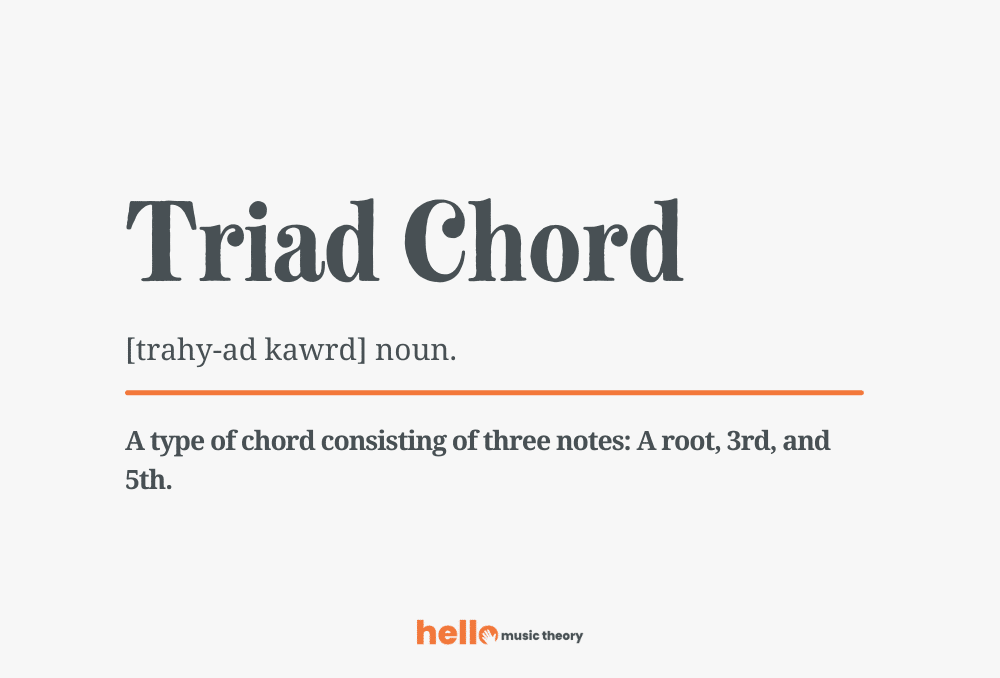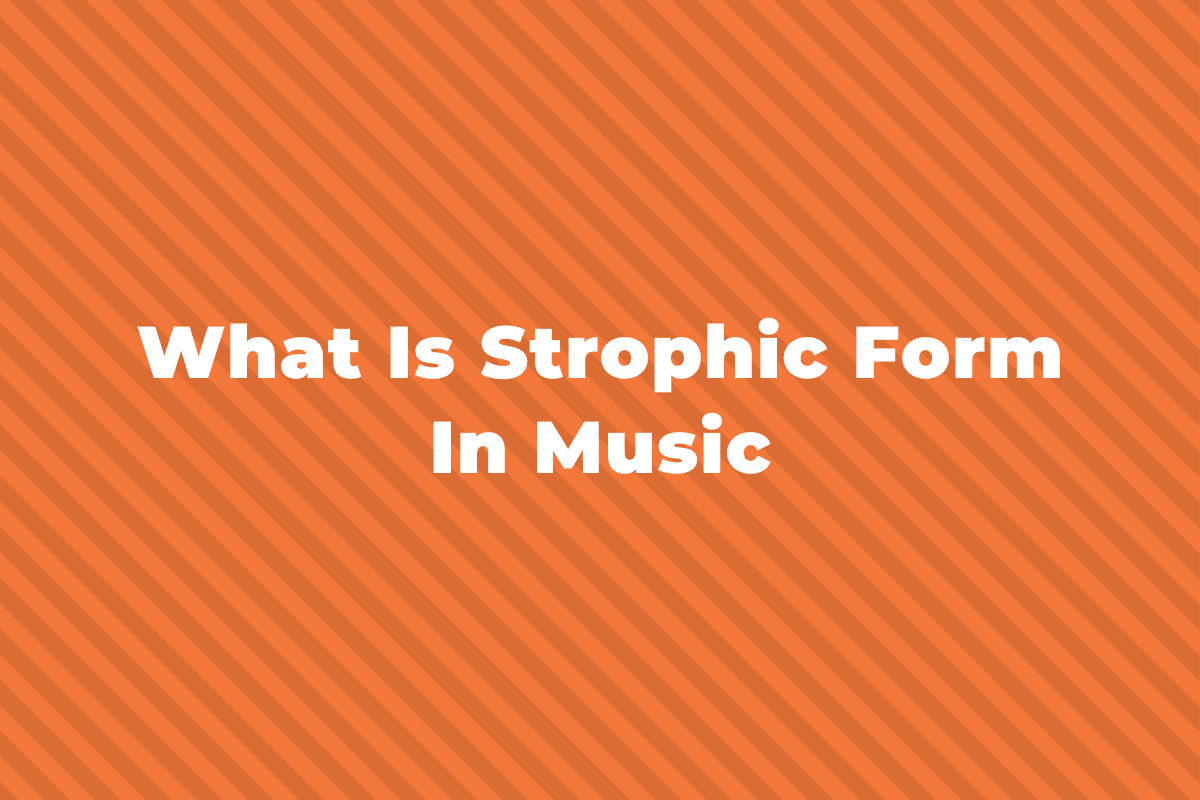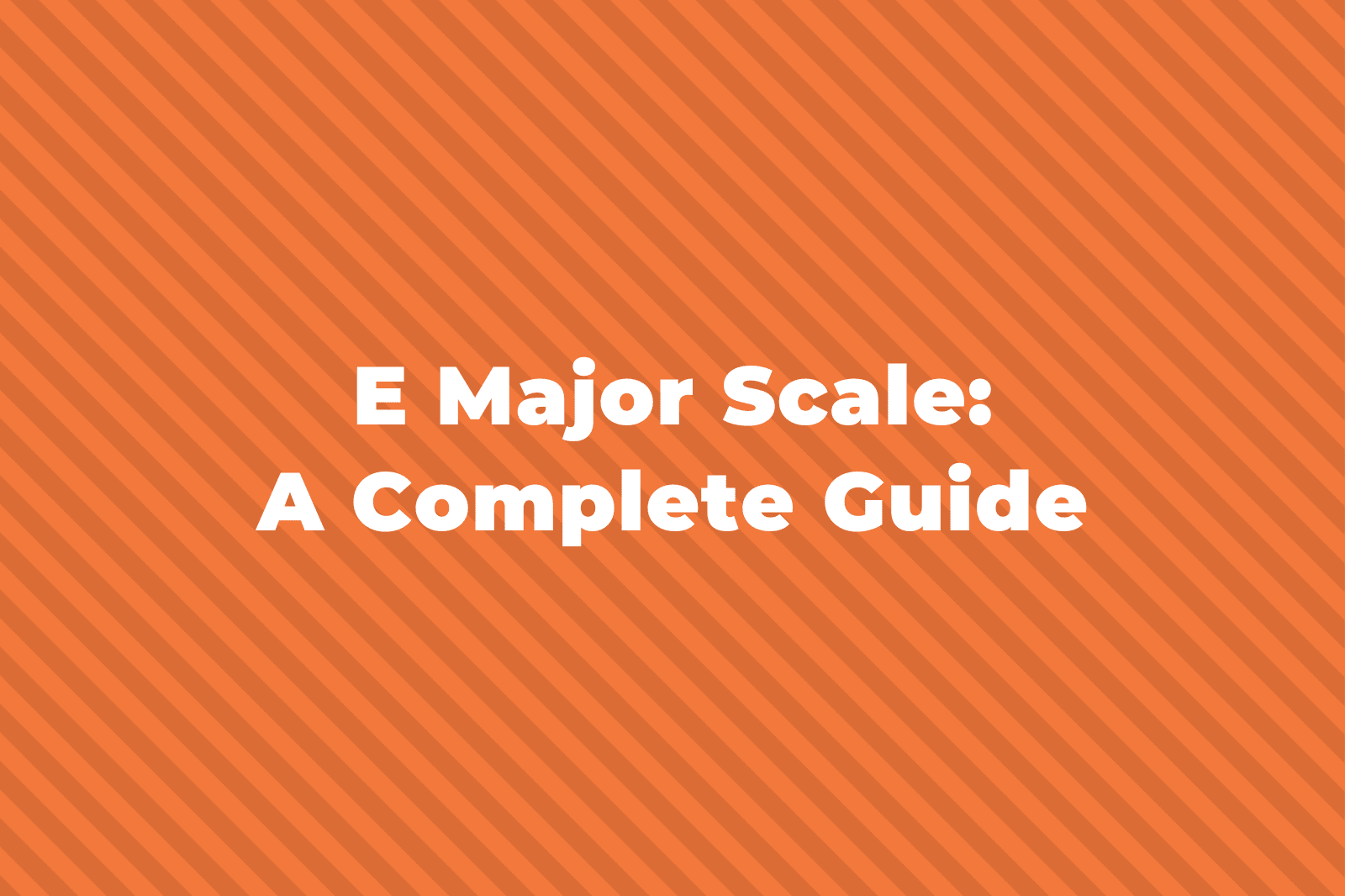Chords are an essential part of music theory that creates harmony. If you’re not aware, a chord is when two or more notes are played at the same time. There are lots of different types of chords, but in this post, we’re going to be looking at a type that has three notes called a triad chord.
What is a Triad Chord?

A triad is a type of chord that has three notes.
It comes from the Greek word for three and is where we get words like triangle (a three-sided shape) and triathlon (a race involving three different sports).
They aren’t made up of any three notes, however.
A triad is built using thirds.
You start with a note, then add the note a third higher, and then add another note a third higher.

The Note Names in a Triad
Each note in a triad chord has a specific name.
These notes are:
- the root – the note on which the triad is built
- the third – an interval of a third above the root
- the fifth – an interval of a 5th above the root
But, triad chords are not all the same, there are actually four different types that we’ll take a look at now.
Different Types of Triad Chords
There are four different types of triads to know about with each being slightly different.
They are:
- major triads
- minor triads
- diminished triads
- augmented triads
Let’s start by looking at major triads.
Major Triads
Major Triads are probably one of the most common types of triad chords.
They are built using the root, major 3rd and perfect 5th.
In C this would be:

C major triad
- C – the root note
- E – a major 3rd above the root
- G – a perfect 5th above the root
Minor Triads
You can also have Minor Triads.
They’re built using the root, minor 3rd and perfect 5th.
In C this would be:

C minor triad
- C – the root note
- Eb – a minor 3rd above the root
- G – a perfect 5th above the root
Diminished Triads
Diminished Triads are a lot less common but you will come across them from time to time.
They are built using the root, minor third, diminished 5th.
All the intervals are minor thirds.
In the key of C this would be:

C diminished triad
- C – the root note
- Eb – a minor 3rd above the root
- Gb – a diminished 5th above the root
Side note: It’s important to flatten the 5th note and not sharpen the 4th note. For example, C, Eb and F# would not be a diminished triad as triad chords must be the root, 3rd and 5th notes. F# would be a raised 4th.
Augmented Triads
The last type of triad is the Augmented Triad.
It’s like the opposite of a diminished triad as they are built using all major 3rd intervals: the root, major 3rd, augmented 5th.
In the key of C, this would be:

C augmented triad
- C – the root note
- E – a major 3rd above the root
- G# – an augmented 5th above the root
Summing up Triads
I hope that helps make a bit more sense of triad chords.
I’ll be updating this post with more details on triad inversions and more soon along with more lessons on chords in general.



